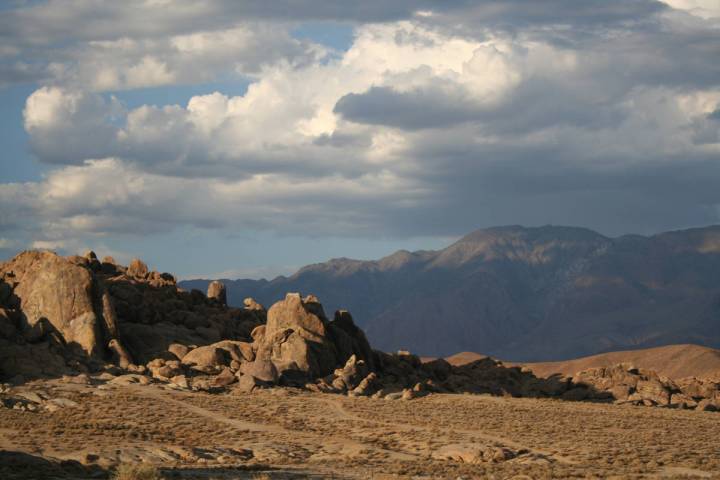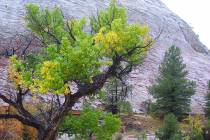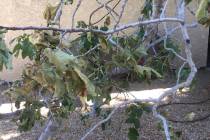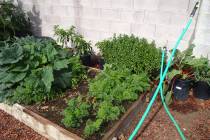River Mountain trail rewarding, with no need for reservations or fees
Local Columns
Conservations groups, coalition of tribes press for creation of Avi Kwa Ame National Monument.
It is true the majority of pomegranates are picked around Halloween. However, the time to pick pomegranates depends on its variety. there are varieties of pomegranates that must be picked at other times. One such variety favored in Southern Nevada is called Utah Sweet that ripens and is ready to be harvested around the end of September.
Let’s focus on controlling Bermuda grass this fall. Common Bermuda grass is sometimes called “devil’s grass” by old-timers. All types of Bermuda grass, from common (the weed) to hybrid Bermuda (think golf course), like heat, sunlight and water but can invade when water is scarce and other plants struggle to shade the ground.
Recreational opportunities await visitors to Lone Pine, where the hills are nestled.
This is the best planting time of the year right now. When planting trees, shade the south and west walls and windows of a home to reduce the cost of summer cooling.
Electric bikes provide riders a boost on the hills along conservation area’s 13-mile scenic loop.
Whether you add compost to the existing soil at planting or bring in a totally different soil mix, make sure the soil is as consistent as possible throughout the landscape. Making the soil the same when planting makes knowing when to irrigate much easier to figure out and schedule.
Now is the optimum planting time during the fall and also the time when nurseries begin their fall planting sales. Location is all-important when selecting landscape plants and matching them to their correct landscape microclimate.
Big Bend of the Colorado State Recreation Area is located at the southern tip of Nevada, along the Colorado River, about 6 miles south of Laughlin.
The Moapa vegetable publication written by Dr. Sylvan Wittwer has information for cultivating vegetables for all of the different elevations found in the Las Vegas Valley.
Outdoor enthusiasts in search of cooler climes can consider a trek to Utah and a walk along this scenic route.
Most of the damage done to plants during high summer temperatures was due to a lack of water. And if there are strong winds, they also use more water. The bottom line, if it’s a hot, bright, windy day, it’s time to water now.
It is important to select good varieties of vegetables to plant in the fall, and the publications by Dr. Sylvan Wittwer, formerly of Logandale, make some solid, old-fashioned varietal recommendations he has had success growing in this area.
Fall colors are typically on display from mid-September to the end of October.

















